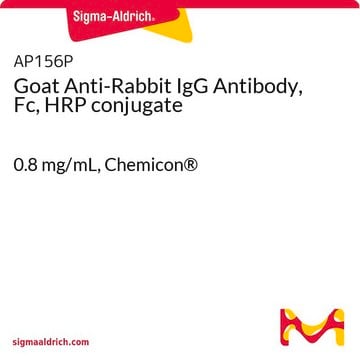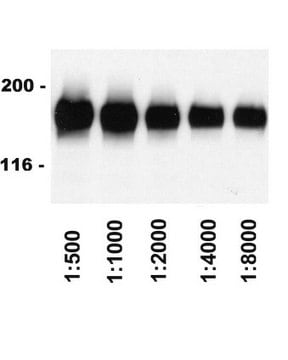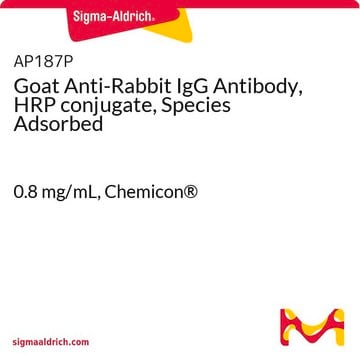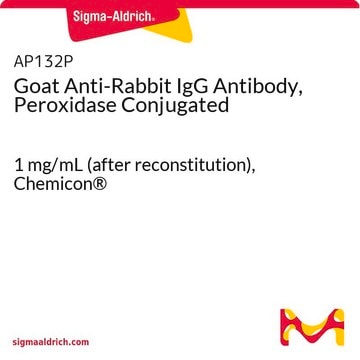AP510P
Sheep Anti-Rabbit IgG Antibody, HRP conjugate
1 mg/mL, Chemicon®
About This Item
Productos recomendados
biological source
sheep
Quality Level
conjugate
peroxidase conjugate
antibody form
purified antibody
antibody product type
secondary antibodies
clone
polyclonal
species reactivity
rabbit
manufacturer/tradename
Chemicon®
concentration
1 mg/mL
technique(s)
western blot: suitable
shipped in
wet ice
target post-translational modification
unmodified
General description
Specificity
Application
Quality
Western Blot Analysis: 0.1 µg/mL of this antibody detected Rabbit IgG in 0.5 µg of Rabbit IgG recombinant protein.
Target description
Physical form
Analysis Note
Rabbit IgG recombinant protein
Legal Information
Not finding the right product?
Try our Herramienta de selección de productos.
signalword
Danger
hcodes
Hazard Classifications
Aquatic Chronic 3 - Repr. 1A
wgk_germany
WGK 2
flash_point_f
Not applicable
flash_point_c
Not applicable
Certificados de análisis (COA)
Busque Certificados de análisis (COA) introduciendo el número de lote del producto. Los números de lote se encuentran en la etiqueta del producto después de las palabras «Lot» o «Batch»
¿Ya tiene este producto?
Encuentre la documentación para los productos que ha comprado recientemente en la Biblioteca de documentos.
Nuestro equipo de científicos tiene experiencia en todas las áreas de investigación: Ciencias de la vida, Ciencia de los materiales, Síntesis química, Cromatografía, Analítica y muchas otras.
Póngase en contacto con el Servicio técnico








